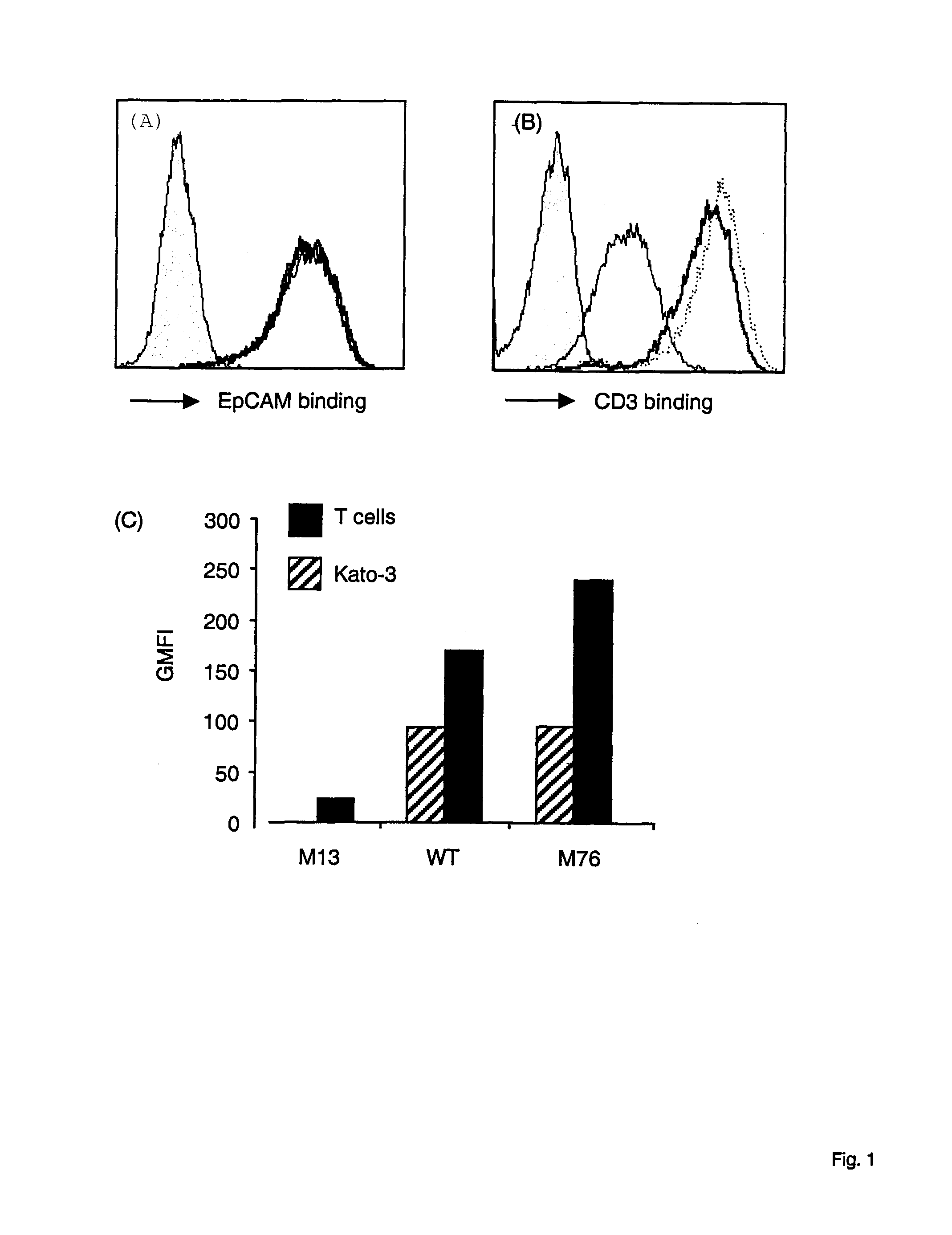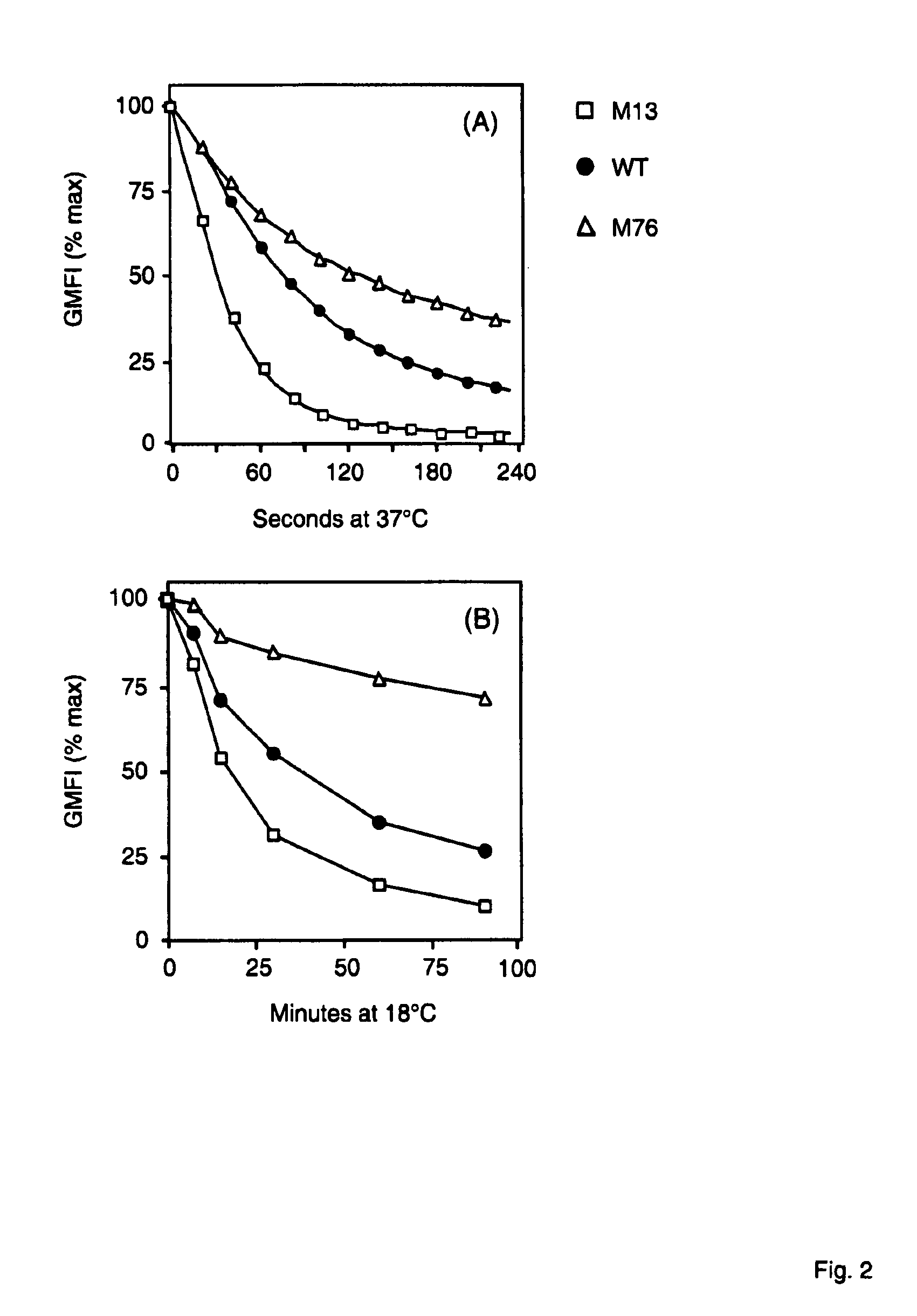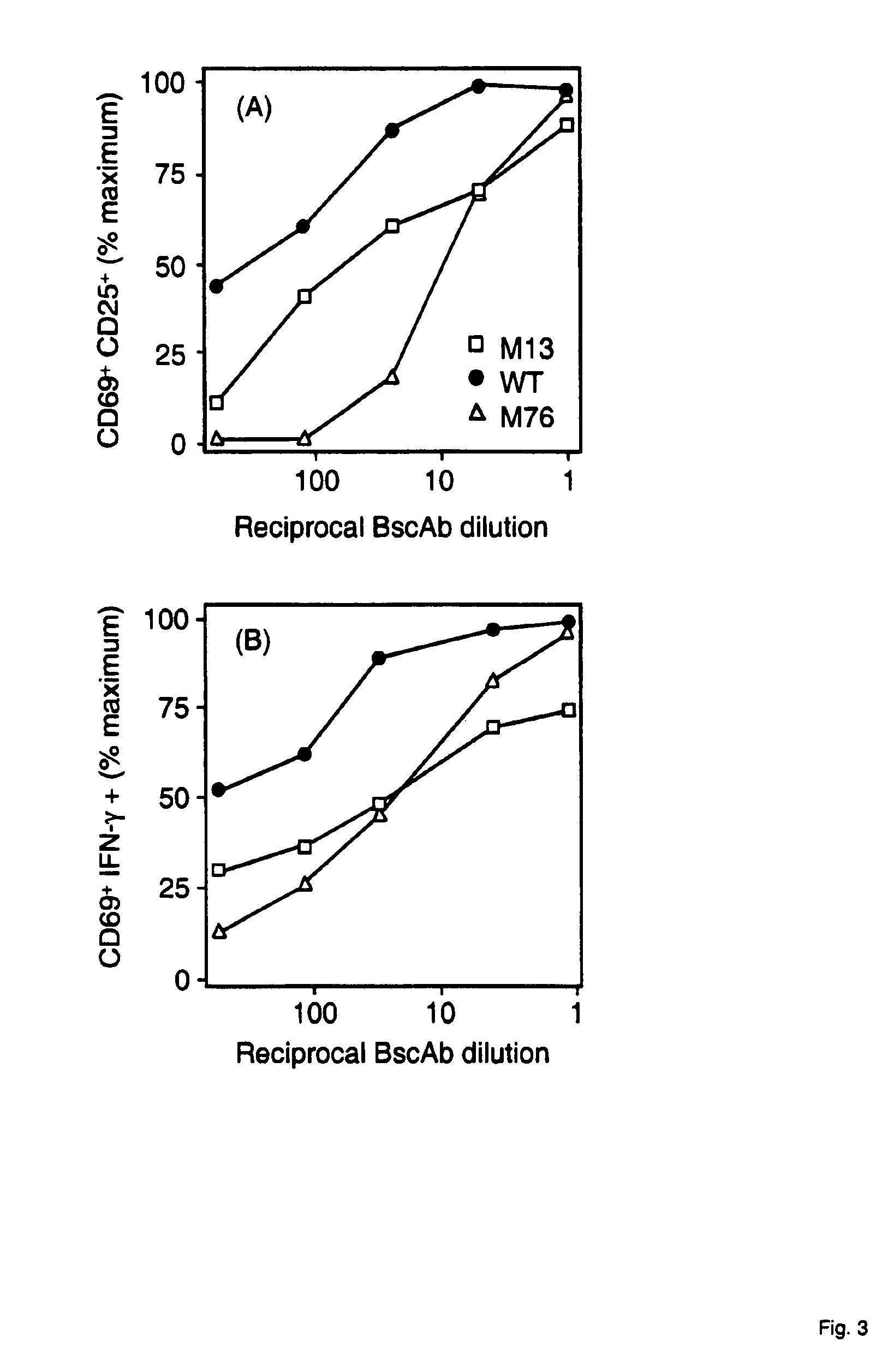Potent T cell modulating molecules
a t cell and t cell technology, applied in the field of polypeptide constructs, can solve the problems of not being generalized, data on dissociation rate measured by biacoreTM do not support serial triggering models, and actual measurements are difficult, so as to increase the level of pro-inflammatory cytokines, and reduce or eliminate tumors
- Summary
- Abstract
- Description
- Claims
- Application Information
AI Technical Summary
Benefits of technology
Problems solved by technology
Method used
Image
Examples
example 1
Description of Relevant Sequences of OKT3
[0140]scFv constructs anti human EpCAM×anti human CD3 were used for generation of mutants in the VH part of anti-CD3 antibody OKT3. Amino acid and nucleotide sequences of VH of OKT3 were derived from NCBI database. The OKT3 heavy chain is available under accession number A22261 and the variable region is deposited under D82081.
[0141]The wildtype amino acid sequence of CDR3 of VH part of anti CD3 monoclonal antibody OKT3 used herein: TyrTyrAspAspHisTyrCysLeuAspTyr (SEQ ID NO: 36) The wildtype nucleotide sequence of CDR3 of VH part of anti CD3 monoclonal antibody OKT3 used herein: TATTATGATGATCATTACTGCCTTGACTAC (SEQ ID NO: 37)
[0142]In the following the corresponding sequences are depicted
A22261: OKT3 Heavy Chain, Amino Acid Sequence (with Signal Peptide):
[0143]
MERHWIFLLLLSVTAGVHSQVQLQQSGAELARPGASVKMSCKASGYTFTRYTM(SEQ ID NO: 38)HWVKQRPGQGLEWIGYINPSRGYTNYNQKFKDKATLTTDKSSSTAYMQLSSLTSEDSAVYYCARYYDDHYCLDYWGQGTTLTVSSAKTTAPSVYPLAPVCGDTTGSSVTLGCLVKGYFP...
example 2
Generation of Mutated Anti-CD3 Expression Vectors
[0149]Expression vectors containing random mutations in the CDR3 of the anti-CD3 heavy chain sequence, 5′-TATTATGATGATCATTAC-3′ (SEQ ID NO:89), were generated by using the QuikChange Site-Directed Mutagenesis Kit (Stratagene). A pEF-DHFR plasmid coding for a bispecific antibody anti-EpCAM / anti-CD3, (Mack 1997, J. Immunol. 158, 3965-3970) was used as a template for extension with PfuTurbo DNA polymerase. Randomly mutated oligonucleotide primer batches specific for the heavy chain of CDR3 were synthesized. Control primers were used to generate 0% (wildtype) and 100% of mutations in the target sequence (M0). Plasmids were purified from individual transformed XL1 colonies and subsequently sequenced (ABI Prism 310, Perkin Elmer).
Wildtype Sequence of VH CDR3 of OKT3 Used for Generation of Mutants:
[0150]
WTTyrTyrAspAspHisTyr[SEQ ID NO: 1]WT nucleotideTATTATGATGATCATTAC[SEQ ID NO 27]sequenceMutants:Mutant M13TyrTyrAsnAspGlnTyr[SEQ ID NO 8]M13 ...
example 3
Binding of Wildtype and CD3 Mutant Bispecific Antibodies to Human T Cells
[0152]The mutants generated in Example 1 were sequenced and bispecific antibodies were expressed in dhFr-CHO cells (ATCC) as described (Mack 1995, PNAS 92, 7021-7025; Mack 1997, Immunity 4, 565-571). Bispecific antibodies were tested for their capacity to bind to CD3 and activate human T cells in the presence of EpCAM+Kato-3 cells by FACS analysis (FIG. 1).
[0153]T cell blasts (Valitutti 1996, J. Exp. Med. 183, 1917-1921) were grown in RPMI 1640 supplemented with 5% human serum, 2 mM glutamine, pyruvate, non essential aminoacids, antibiotics and 5×10−5 M 2-mercaptoethanol. The EpCAM positive cell line Kato-3 cells (ATCC) was grown in DMEM 10% FCS.
[0154]To detect the amount of mutant CD3 bispecific antibodies binding to the cell surface FACS analysis were performed. Kato-3 (FIG. 1A) and peripheral blood T cells (FIG. 1B) were incubated with wildtype (WT) or mutant CD3 bispecific antibody (M13, M76). Binding of bi...
PUM
| Property | Measurement | Unit |
|---|---|---|
| concentrations | aaaaa | aaaaa |
| body weight | aaaaa | aaaaa |
| concentrations | aaaaa | aaaaa |
Abstract
Description
Claims
Application Information
 Login to View More
Login to View More - R&D
- Intellectual Property
- Life Sciences
- Materials
- Tech Scout
- Unparalleled Data Quality
- Higher Quality Content
- 60% Fewer Hallucinations
Browse by: Latest US Patents, China's latest patents, Technical Efficacy Thesaurus, Application Domain, Technology Topic, Popular Technical Reports.
© 2025 PatSnap. All rights reserved.Legal|Privacy policy|Modern Slavery Act Transparency Statement|Sitemap|About US| Contact US: help@patsnap.com



